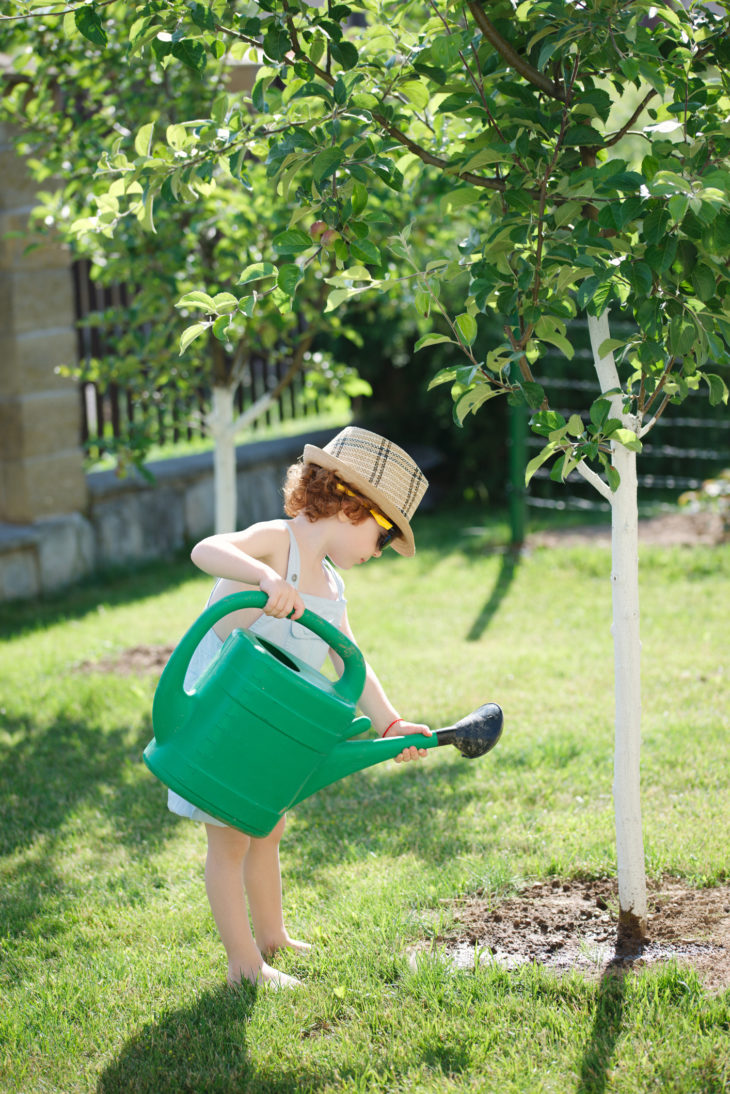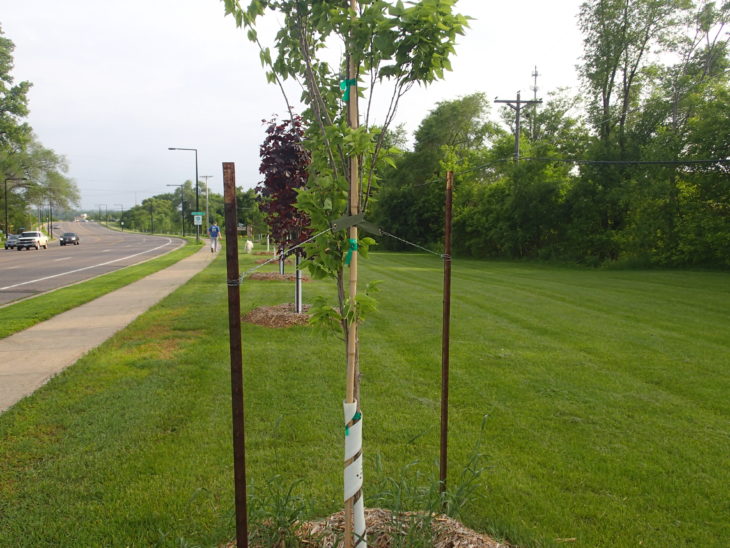Every day, about 80,000 acres of forests disappear from the earth. By planting new trees, people can start to replenish the earth after all that deforestation.
But planting is only the first step. A newly planted needs special care so that it has the best chances of surviving and thriving in its new environment. What you do during the first 2-3 years can determine how well the seedling becomes established, and its roots get anchored into the soil for decades to come.
Keep reading to learn the best tips for taking care of and watering new ones.

Source: Nevada Tree Service
Contents
Watering New Trees Should be Done Regularly
Newly planted care starts with watering. Why?
Well, without water, roots can’t grow. Healthy root growth is essential for a successful transition from nursery to the landscape. So, what’s the best way to water newly planted trees?
First, you need to do deep watering for the first 2-3 years of growth. For planted in dry summer areas, you may need to provide supplemental water throughout the tree’s life. While watering, your goal should be to provide consistent soil moisture— not a swamp.
Stake the Tree If Necessary
For the vast majority of new seedlings, staking isn’t necessary. So how do you know if you should stake your new?
It’s easy. If the site is windy or seedling has trouble standing upright on its own, then staking is the best solution. Before staking, remove any tightly attached stakes that may have come. Place two sturdy stakes on both sides of the trunk and secure them with flexible pieces of cloth, canvas, or rubber. Ensure the stakes are outside the root ball. Don’t overly tie the stakes as it’s important to sway a little in the wind to develop a sturdy trunk and healthy roots. Once the tree can stand on its own, you may remove the ties.

Source: Amelanchier Lamarckii
Mulch the Newly Planted Trees
Why is mulching such an essential part of the new one care?
Well, mulch helps moderate soil temperatures, keeping roots cool in the summer and warm during the winter. It reduces evaporation and nutrient loss, besides controlling weeds. To mulch, pull any grass or other perennial weeds from the root flare of the tree before starting to place mulch. Begin placing mulch where the roots come into contact with the soil.
Prune Diseased or Damaged Branches
The purpose of pruning is to improve the health of the tree. So when should you start pruning your new seedling?
Well, once you notice that there are dead or loose branches, it’s time to prune. Pruning can also help eliminate disease and insects from the leaves or branches of your new plant.

Source: Fiskars
Avoid DIY: Seek Professional Tree-Care Assistance
Every care decision you make during the early years of the tree’s life can determine how well it gets established. New tree-care isn’t a complicated affair.
As long as you’re staking, mulching, pruning, and watering new seedling, you will give them the head start they need to thrive.
If you need any assistance with tree-care at home, consider www.aaatrees.net with over 20 years’ experience in tree service and certified arborists on-hand.
